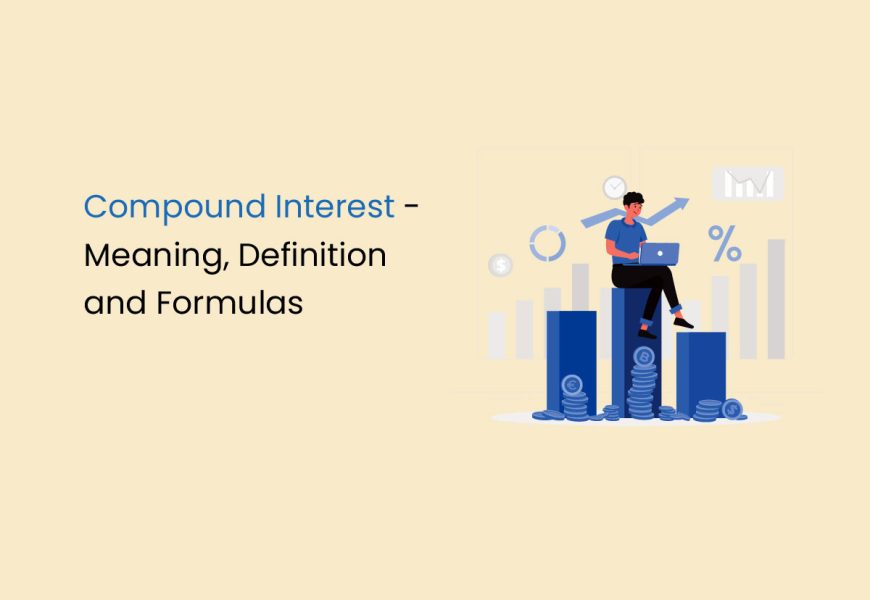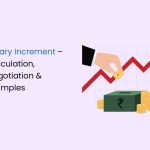Upon perusing our bank statements, we often discern varying interest credited annually. This isn’t simple interest; it’s compound interest (CI). This article breaks down the basics by exploring what CI is, its formula, and the derivation for annual, half-yearly, and quarterly compounding. Real-life examples illustrate why compound interest yields more than simple interest returns. Explore the intricacies of compound interest for a comprehensive understanding.
What is Compound Interest?
Compound interest is the result of calculating interest on both the principal and the accumulated interest from previous periods. Diverging from simple interest, where interest isn’t added to the principal for subsequent calculations, compound interest is denoted as C.I. in Mathematics.
This concept resonates across banking, finance, and diverse sectors and is applied to scenarios like population changes, bacterial growth, and asset value fluctuations.
In Mathematics, calculating compound interest involves various approaches tailored to specific situations, employing the compound interest formula. To derive compound interest, understanding the amount and principal—the difference between these two values- is essential.
Formula for Compound Interest
As previously discussed, compound interest stems from the initial principal amount and the accrued interest over time. The compound interest formula, expressed as
Compound Interest = Amount – Principal
It helps quantify this concept.
The amount ‘A’ is determined by the formula:
A = P x (1 + r/n)^nt
Here,
- A is the new principal sum or the total amount after the compounding period.
- P is the original or initial amount.
- I is the annual interest rate.
- N represents the compounding frequency or the number of times interest is compounded in a year.
- T signifies the number of years.
Alternatively, we can rewrite the formula as:
CI = A – P
This is also known as the periodic compounding formula.
To break it down further:
- A represents the total amount after the compounding period.
- P is the initial amount.
- R is the annual interest rate.
- N is the compounding frequency per year.
- T is the number of years.
It’s crucial to note that this is the general formula for various compounding scenarios.
For instance, if interest is compounded annually, the amount is given by:
A = P x (1 + r/100)^t
This versatile formula can be adapted for different compounding frequencies such as yearly, half-yearly, quarterly, monthly, or daily, providing flexibility in compound interest rate calculations.
How Potent is Compounding
The potency of compound interest lies in its ever-accelerating growth, incorporating interest from previous periods. In the given example, even though the total interest payable over the three-year loan is $1,576.25, it’s important to note that this interest amount differs from what it would be with simple interest. The table below illustrates the interest payable at the end of each year.
Compound interest has the potential to amplify investment returns over the long term significantly.
For instance, over 10 years, a ₹1,00,000 deposit earning 5% simple annual interest would yield ₹50,000 in total interest. However, if the same deposit had a monthly compound interest rate of 5%, the interest would accumulate to approximately ₹64,700.
Compounding Interest Periods
Compounding periods represent intervals when interest is added to an account, occurring in various frequencies such as annually, semi-annually, quarterly, monthly, daily, or continuously. The compounding frequency significantly impacts the growth of compound interest.
Common compounding schedules for financial instruments include:
- Savings accounts and money market accounts: Typically compounded daily by banks.
- Certificate of deposit (CD): Commonly compounded daily or monthly.
- Series I bonds: Interest is compounded semiannually, every six months.
- Loans: Often compounded monthly, with variations such as “interest capitalisation” for student loans.
- Credit cards: Interest is frequently compounded daily, potentially accumulating rapidly.
Certain banks also offer continuously compounding interest, where interest is added to the principal as regularly as possible. However, it doesn’t accrue significantly more than daily compounding for practical purposes unless funds are deposited and withdrawn on the same day.
The frequency of compounding periods holds significance: more frequent compounding benefits investors or creditors, while borrowers may find it less favourable. The fundamental principle is that more compounding periods result in greater compound interest.
Why is Compounding Great for the Youth?
Many young individuals tend to overlook saving for retirement, prioritising immediate expenses. However, initiating savings early allows compounding interest to amplify even with modest amounts. Saving smaller sums can yield substantial returns compared to saving more significant amounts later in life.
Consider this example:
Start saving ₹5,000 per month at age 20, earning an average of 4% annually, compounded monthly over 40 years. By age 65, you would have ₹90,800 with an initial investment of ₹32,400.
Now, imagine your twin begins investing at age 50. They invest ₹50,000 initially, then ₹5,000 monthly for 15 years, also averaging a monthly compounded 4% return. By age 65, your twin has earned ₹78,547, with a principal investment of ₹55,000.
By the time you reach the 45-year savings mark (while your twin has saved for 15 years), you will have more, even though your twin invested approximately twice your initial amount.
Pros and Cons of Compound Interest
There are two sides to everything, good and bad; compounding is not spared by this logic either. Let’s explore the advantages and disadvantages of compounding.
Advantages
- Long-term Wealth Building: Compounding enhances savings and investments, enabling returns to earn additional returns and fostering long-term wealth accumulation.
- Wealth Erosion Mitigation: Compounding’s exponential growth helps counter wealth-eroding factors like inflation, safeguarding against a decline in purchasing power.
- Loan Repayment Advantage: Making payments beyond the minimum can leverage compounding, reducing the total interest paid on loans.
Disadvantages
- High-interest Debt Challenge: Minimum payments on high-interest loans or credit cards may lead to exponential balance growth, trapping individuals in a debt cycle.
- Taxation of Returns: Earnings from compound interest are taxable at your bracket unless held in a tax-sheltered account.
- Complex Calculation: Unlike simple interest, compounding interest involves more complex calculations, making online calculators a more straightforward tool for accuracy.
Investments for Compound Interest
Investors leveraging a brokerage account’s dividend reinvestment plan (DRIP) are harnessing the power of compounding in their investments.
Assets with dividends, such as dividend stocks or mutual funds, provide an avenue for investors to capitalise on compound interest. Reinvesting dividends allows the purchase of additional shares of the asset, leading to the potential for more interest to accumulate on a more considerable investment.
Another avenue for compounding interest is through the purchase of zero-coupon bonds. Unlike traditional bond issues that provide periodic interest payments, zero-coupon bonds, purchased at a discount to their original value, do not distribute interest checks. Instead, they grow over time, utilising the power of compounding to increase in value and reach their full price at maturity.
FAQs on Compound Interest
How to Calculate Compound Interest?
Compound interest is calculated using the formula:
CI = P[(1 + R)^nt – 1]
Where,
P = Initial amount
R = Annual interest rate (percentage)
N = Number of compounding periods
T = Time in years
Who Benefits from Compound Interest?
Investors benefit from compound interest as it accrues on both the principal and the interest already earned.
What is the Formula for Quarterly Compounded Interest?
The formula for interest compounded quarterly is:
A = P(1 + (R/4)/100)^4T





















